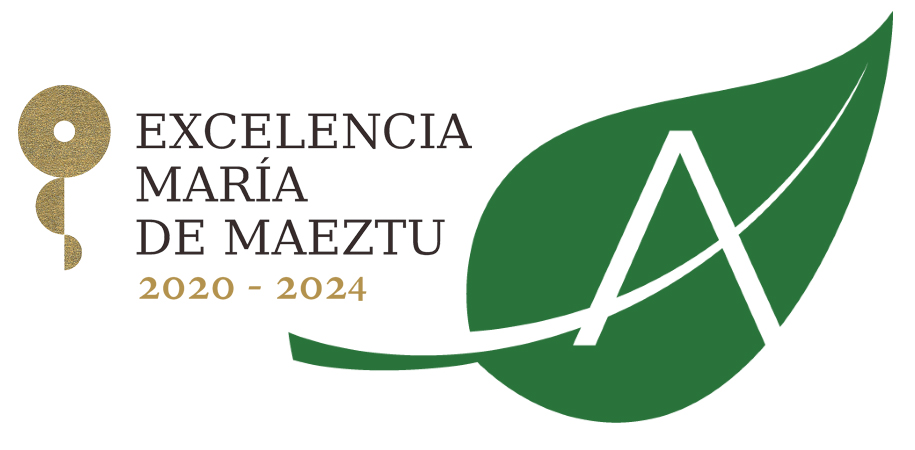During the period 2015-2019, research lines and activities developed by DAUCO had a general objective of improving agricultural production in a sustainable way and considering climate change. All this is set in a context of circular bioeconomy and under the energy sustainability principles. These actions led to a remarkable research activity with an extensive background and high-quality outputs. The investigations of these twelve groups can be grouped into three general lines that define the essence of sustainable plant production in agricultural and forest ecosystems. The first line includes the study of basic resources such as water, soil, nutrients and biodiversity. The second line, which includes four research groups, comprises the study of genetic resources, means and techniques for the management of agricultural crops and forest species based on knowledge of the physiology of the plant. Finally, the third line covers plant protection, both in agricultural and forest ecosystems. This protection extends to any threat, both biotic and abiotic, although it mainly focuses on plant pests and diseases due to biotic agents.
Therefore, the interaction between these three lines and the participating groups, as well as the synergies that result from such interaction, constitute the foundations of the research activities of the DAUCO. This interaction and the synergies derived from it would be meaningless if there was no close relationship with the productive sector. In this sense, the research carried out in the DAUCO has a marked applied character aimed at responding to society's challenges, as evidenced by the numerous research projects and contracts with public entities and private companies. All this contributes to achieving the common objective of these investigations, which is the integrated and sustainable management of agricultural and forest ecosystems.
The research lines developed by DAUCO staff during the reference period (2015-2019) split by the main research areas were:
1. Water, Soil, Nutrients and Biodiversity Resources in Plant Production:
Research line 1 consists of the research units of General Hydrology and Agricultural Hydraulic, Fluvial Dynamics and Hydrology, Hydraulics and Irrigation, and Soil Science. The first line includes the study of basic resources such as water, soil, nutrients and biodiversity. This line is the most extensive dueto its broad theme, which supports the other two lines, so it includes half of the Department's research groups. Covers the following sublines:
- Precision irrigation based on Big Data and Artificial Intelligence techniques
- Advanced modeling of hydro-environmental flows
- Co-evolution of hydrology and vegetation in Mediterranean mountain areas to assess adaptation strategies in a changing environment
- Strategies to curb phosphorus fertilization without affecting agricultural production ç
- Evaluate the bioavailability of critical nutrients (P, N) in edaphic environments under climate change
- Interactions between critical nutrients for plant nutrition
- Strategies for the development of solar fertilizers
- Entomopathogenic fungi as a green alternative to chemical products to increase the availability of nutrients in soils and to promote plant growth
- Securing soils for suistanable agriculture
2. Crop Management, and Research line
Research line 2 consists of the research units of Plant Physiology, Soil-Water-Plant Relations, Arable Crops, Genetic Resources and Olive Tree Improvement, and Arboriculture. The second line, which includes four research groups, comprises the study of genetic resources, means and techniques for the management of agricultural crops and forest species based on knowledge of the physiology of the plant. Covers the following sublines:
- Study of the regulation of the physiological and morphological responses dicot plants develop to cope with Fe or P deficiencies
- Role of beneficial rhizosphere microbes on the acquisition of nutrients
- Management of Olive groves in hedgerows
- Woody plants responses to abiotic stresses
- Mineral nutrition and fertilization in woody plants
- Crop models and Decision support systems (DSS) to improve the management and minimize the environmental impact of irrigation and fertilization practices under climate change scenarios
3. Plant Protection
Research line 3 consists of the research units of Agricultural Entomology, Agroforestry Pathology, and Biological Basis for Knowledge, Conservation and Sustainable Use of Biodiversity. The third line covers plant protection, both in agricultural and forest ecosystems. This protection extends to any threat, both biotic and abiotic, although it mainly focuses on plant pests and diseases due to biotic agents. Covers the following sublines:
- Development of effective, economically viable, and environmentally friendly methods based on the application of autochthonous entomopathogenic fungal (EPF) strains for insect pest control
- Develop new fungal molecules as green pesticides
- Increase the performance of developed EPF biopesticides
- Integrated management of Verticillium Wilt
- Epidemic characterization of the main aerial diseases of olive
- Aetiology and control of oak (Quercus spp.) decline
- Aetiology and control of diseases of tree nuts
- Aetiology, epidemiology and control of fungal trunk diseases in Mediterranean woody crops
- Increase the performance of developed EPF bio pesticides through its improvement of the fungal virulence (i.e., insecticidal compounds, insect death stress-mediated, mycoviruses) reducing the lethal times and becoming competitive against conventional insecticides


